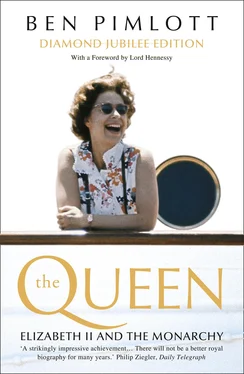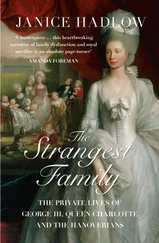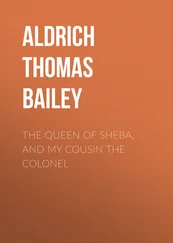Ben Pimlott understood all this and illustrated it through all his pages, not one of which was dully written. He also had a sure touch when it came to the emotional geography of the wider landscapes where the Sovereign, the Royal Family and the people meet. He, for example, was the pilot we – and future historians – needed through the days and the swirls and the eddies that followed the death of Princess Diana in 1997. I have a suspicion that it was Ben who gave Alastair Campbell the description ‘the People’s Princess’ which the Prime Minister, Tony Blair, took up in his reaction to the tragedy in Paris. Ben was very good at mapping the Queen’s and the Palace’s recovery from the wobble in public esteem of September 1997. And it’s fascinating to think what Ben might have made now of the sixty-year spectrum of the Queen’s reign – of the self-restoring powers of the British Monarchy and of the enduring qualities of Queen Elizabeth which have always been a lustrous asset in tough times as well as the easier stretches in the life of her nation.
It is always difficult to winnow out the personal premium from the good standing of the institution of Monarchy (there are usually two-thirds of those polled in the United Kingdom in favour of it). The Queen came to the throne at a time when we were dripping with deference as a society. We are scarcely moist now. Yet the esteem for the Queen remains. As Head of State, she has always enhanced the great office she holds. The same cannot be said of others – not least some of those who have held the headship of government as Prime Minister in No. 10 Downing Street. And one scans the world in vain for another sixty-year example of faultless public duty. The Queen could not have had better personal trainers than her father, King George VI, and her mother, Queen Elizabeth. But, in sporting terms, it’s as if she had won gold at every Olympics from Helsinki in 1952 to London in 2012.
Ben Pimlott, too, won gold by writing this book and gold standard it will remain. For I will be surprised if, when the Queen’s official biographer is appointed, it’s not Pimlott on Elizabeth II that’s the first book for which he or she will reach on the shelf.
Lord Hennessy of Nympsfield, FBA
Attlee Professor of Contemporary British History
School of History, Queen Mary, University of London
LondonMarch 2012
FOREWORD
TO THE GOLDEN JUBILEE EDITION
In my Preface to the paperback edition of The Queen: A Biography of Elizabeth II , published a year after the hardback, I excused myself for not adding new material by saying that ‘an extra chapter would be part of another book’. I meant that any historical account is a snapshot, not just of its subject matter, but of the attitudes of the author when it is written. In this sense, The Queen: Elizabeth II and the Monarchy is another book. The first edition of The Queen was researched and written in the mid-nineties. It appeared in 1996, the year of the divorce of the Prince and Princess of Wales, and doubtless reflects that timing. This Golden Jubilee edition has been prepared several years later. It contains not one additional chapter, but five. The result is a book which has an altered shape from the original, while at the same time offering in the extra chapters a different snapshot.
Chapters 1 to 23 are little changed. There are a few corrections and stylistic tightenings, but I have not attempted to revise my interpretation. The new material is contained in Chapters 24 to 28. Here I have examined post-1996 events and sought to place them in the context of the Queen’s life and reign as a whole. I have also looked more closely – partly in the light of ‘Diana week’ – at aspects of the Monarch’s role that go beyond the purely constitutional or symbolic. If there is a new theme, it has to do with the ancient (but also apparently continuing) concept of ‘royalty’. At the same time, I have tried to integrate the added chapters so that the reader who comes to the book afresh can take it as a single work, and move from old to new without too great a sense of the division. The revised title is intended to indicate the shift in the book’s centre of gravity, and also to distinguish this edition from earlier ones.
I have included the original (hardback) Preface, and I would like to repeat my thanks to the people listed there, many of whom have been re-interviewed or who have given help with this edition in other ways. In particular, I would like to record my unique debt to the late Lord Charteris – a great royal and public servant with whom I spent many happy, instructive and sometimes hilarious hours in the cell-like interview rooms of the Palace of Westminster, and whose voice I often used to illuminate my text. In addition, I should like to thank the staff of the Buckingham Palace press office, and especially Geoff Crawford and Penny Russell-Smith, successively Press Secretaries to the Queen; together with Mary Francis, Peter Galloway, David Hill, Stephen Lamport, Robin Ludlow, Lady Penn, Frank Prochaska and a number of others who prefer not to be named. I should once again like to give my special thanks to Arabella Pike of HarperCollins, for her encouragement and ever incisive advice. I should also like to thank Aisha Rahman for her care and efficiency in guiding the Golden Jubilee edition through to publication. Caroline Wood has again provided invaluable help as picture researcher. At Goldsmiths, I am extremely grateful to Edna Pellett for typing an illegible (sometimes even to the author) manuscript with astonishing skill and without reproach. I would also like to thank Jef McAllister, London Bureau Chief of Time Magazine , and the staff at the Australian High Commission, for their kindness in providing access to newspaper and other files; and Dan and Nat Pimlott for their resourcefulness in sifting through them.
New Cross, London SE14 September 2001
PREFACE
‘What a marvellous way of looking at the history of Britain’, said Raphael Samuel, when I told him about this book. Others expressed surprise, wondering whether a study of the Head of State and Head of the Commonwealth could be a serious or worthwhile enterprise. Whether or not they are right, it has certainly been an extraordinary and fascinating adventure: partly because of the fresh perspective on familiar events it has given me, after years of writing about Labour politicians; partly because of the human drama of a life so exceptionally privileged, and so exceptionally constrained; and partly because of the obsession with royalty of the British public, of which I am a member. Perhaps the last has interested me most of all. To some extent, therefore, this is a book about the Queen in people’s heads, as well as at Buckingham Palace. It is, of course, incomplete – no work could be more ‘interim’ than an account of a monarch who may still have decades to reign. However, because the story is still going on with critical chapters yet to come, it is also – more than most biographies – concerned with now.
It is an ‘unofficial’ study, and draws eclectically on a variety of sources. For the period up to 1952, the Royal Archives have been invaluable; documentation up to the mid or late 1960s has been provided by the Public Record Office and the BBC Written Archive Centre, alongside a number of private collections of papers, listed at the end of this book. For later years, interviews have been particularly helpful. In addition, there is a wealth of published material.
I have a great many individual debts. I am extremely grateful to Sir Robert Fellowes (Private Secretary to the Queen and Keeper of the Royal Archives, Charles Anson (Press Secretary to the Queen), Oliver Everett (Assistant Keeper of the Royal Archives) and Sheila de Bellaigue (Registrar of the Royal Archives) for assisting with my requests whenever it was possible to do so.
Читать дальше












